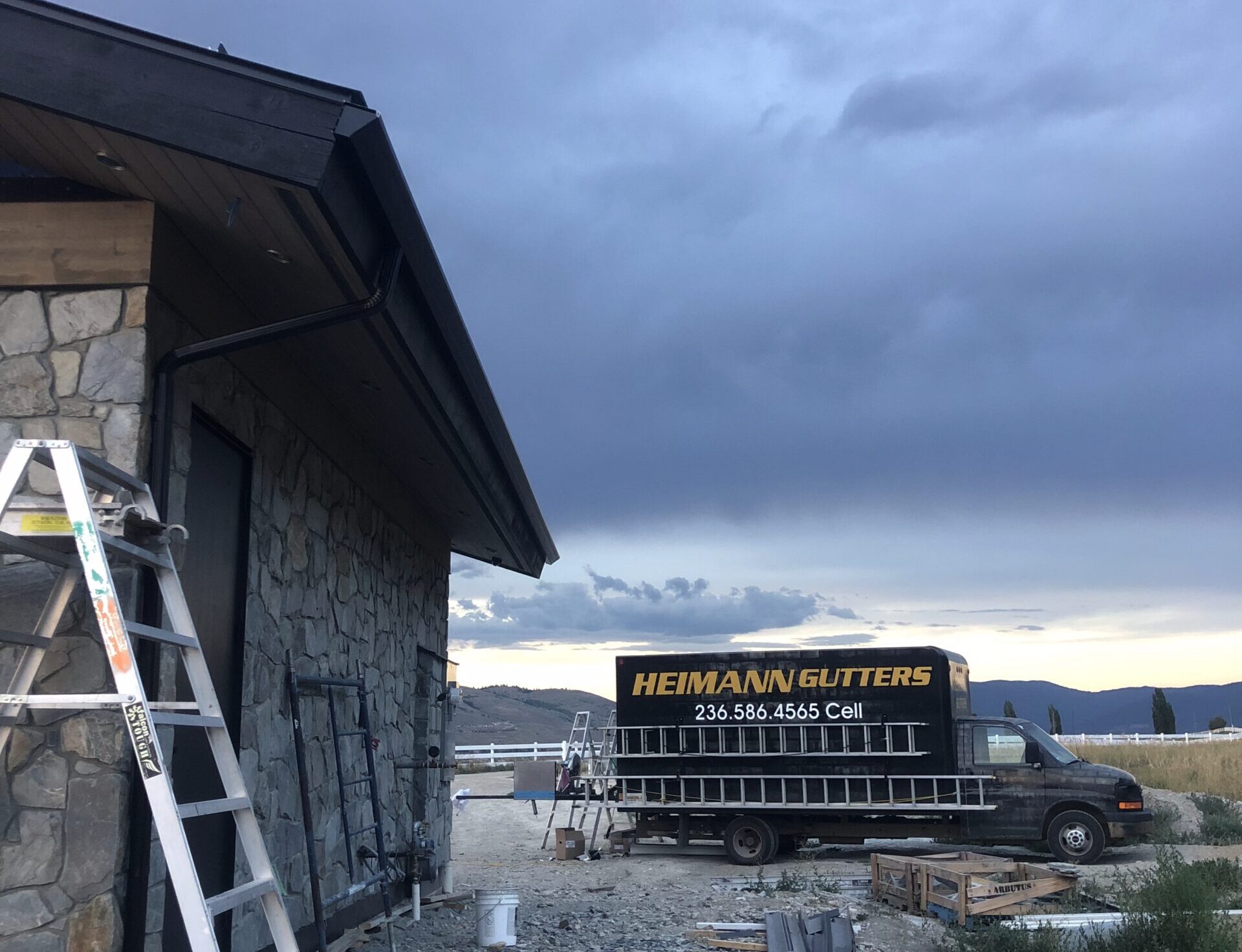Gutter Slope 101: What BC Homeowners Should Know About Drainage
When homeowners think about gutter performance, they often imagine keeping them clear of leaves, twigs, and pine needles. But there’s another critical factor that determines whether your system works properly: slope.
Also called pitch, gutter slope is the slight angle built into your gutters to ensure water flows toward the downspouts. Without the right slope, even the cleanest gutters won’t function as they should. Instead of draining, water can sit stagnant, overflow during storms, or leak into areas it was designed to protect.
For BC homeowners, where summer brings a mix of dry conditions and sudden downpours, proper gutter slope is essential for both preventing water damage and reducing fire risk.
Why Slope Matters in Gutter Systems
At first glance, gutters may look like they run perfectly level along the roofline. In reality, they’re installed at a subtle angle. This slope, usually just a few millimeters for every foot, creates the steady flow needed for water to move efficiently toward the downspouts.
When the slope is too flat, water sits in the gutter, leading to standing pools that attract insects, cause rust, and eventually sag the system under the added weight. When the slope is too steep, water moves too quickly, bypassing the downspouts and spilling over the sides, which can erode landscaping and damage siding.
The right slope strikes a balance: water moves smoothly toward the drains without overflowing or pooling.
How BC Weather Affects Gutter Drainage
British Columbia’s unique climate makes gutter slopes even more important. In the Okanagan and Southern Interior, sudden August storms can send heavy rain rushing down roofs in minutes. A gutter system with poor slope won’t keep up with that volume, and overflow is almost guaranteed.
Meanwhile, in wildfire-prone regions, standing debris mixed with trapped water inside poorly pitched gutters creates a combustible mess. When gutters hold damp organic matter through the summer, they dry into tinder under the heat, making them more susceptible to ignition if embers land nearby.
Even coastal homeowners aren’t immune. In the Lower Mainland and Vancouver Island, summer downpours and early fall rains can quickly expose slope issues if water isn’t flowing properly.
Recognizing the Signs of Slope Problems
Most homeowners don’t think about slope until the symptoms show up. Standing water in sections of the gutter, overflow during even moderate rain, and visible sagging are often the first red flags. Water pooling near the base of the house, stained siding, or erosion around landscaping can also point to a system that isn’t carrying water where it should.
These issues may start small, but over time they compromise the integrity of both the gutter system and the home itself. Persistent water against the foundation can lead to cracking or basement leaks, while overflow onto wooden trim can cause rot and structural weakening.
Why Slope Issues Develop Over Time
Even if your gutters were installed correctly, slope issues can develop as the home ages. Fascia boards can warp, fasteners can loosen, and heavy snow loads in winter can pull sections of the system out of alignment. In older homes, it’s common to see gutters that appear intact but no longer carry water properly because of gradual shifts.
Left unaddressed, these small slope issues can cause big problems: erosion around the foundation, leaks into soffits and eaves, or wood rot behind the gutters. That’s why periodic inspections are just as important as seasonal cleanings.
The Fix: Professional Adjustment and Realignment
Correcting slope isn’t just a matter of tightening a few screws. It often requires professional adjustment, realignment, and sometimes replacing sections of gutter that have been warped or damaged. Installers use levels and string lines to calculate the exact pitch needed for each section of your home, ensuring downspouts are properly positioned to carry water away.
In some cases, slope adjustments can be combined with upgrades like continuous hangers, which reinforce the system against sagging and improve long-term drainage performance.
Protect Your Home Before the Next Storm
As summer draws to a close and BC heads into the wetter months ahead, gutter slope should be top of mind for every homeowner. Proper drainage ensures your system does what it’s meant to do: protect your roof, siding, and foundation while keeping your home safe from water and fire risks.
If you’ve noticed signs of poor drainage, sagging sections, or overflow during rain, don’t wait until fall storms make the problem worse.
Contact us at Heimann Gutters today to schedule a professional inspection or adjustment. Our team ensures your gutters are clean, sloped correctly, and ready to protect your home through every season.

